In 2023, the SARE National Reporting, Coordination, and Communications Office (NRCCO) contracted with Insight for Action to conduct a post-project evaluation of four of SARE's regional grant programs. The purpose of the evaluation was to characterize key impacts made by SARE’s grantmaking from 2016 through 2023. The evaluation employed the Success Case Method (SCM) to identify program impacts grounded in a theory- and practice-informed impact model.
For the post-project evaluation, the SCM entailed: 1) Developing an initial impact model based on a scan of web-based resources and SARE background materials, 17 Subject Matter Expert (SME) interviews, and review of a balanced sample of 120 grantee final reports, 2) a self-report survey to identify potential success cases, and 3) in-depth interviews to explore how SARE-funded activities contributed to longer-term achievements and impacts.
Due to the unique nature of the SARE Professional Development Program (PDP), it was not included in the SCM evaluation, but two success case studies were developed separately for this program and are included here.
The final case study corpus included 23 success cases that are available below.
Case Studies of SARE Grant Impacts
The case studies are organized here by grant program. For each grant, the state and region are listed beside the project title. Following the list is a map that shows where each project took place.
Research and Education Grants
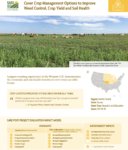
Cover Crop Management Options to Improve Weed Control, Crop Yield and Soil Health – Kansas
Longest-running experiment in the Mid-Western U.S. demonstrates the economic and soil-health benefits of cover crops as cattle forage. Whether you graze cover crops with livestock or you hay it, you get an economic benefit even if it impacts your next crop yield.” —Dr. Augustine Obour, Research and Education Grantee Crop-Livestock Integrated Systems are Economically Viable […]

Staying Ahead in the Packshed: Improving Postharvest Equipment and Building Guidance for Fruit and Vegetable Farms – Vermont
Coupling on-farm technical assistance with case study methods to enhance postharvest infrastructure and build a peer-to-peer training network. Produce that has been harvested is a living organism, but it is dying. The best we can do is develop systems and practices that maintain and sustain quality and safety as long as possible. All of this […]
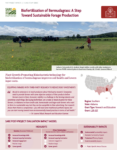
Biofertilization of Bermudagrass: A Step Toward Sustainable Forage Production – Alabama
Plant Growth-Promoting Rhizobacteria technology for biofertilization of bermudagrass improves soil health and lowers input costs. My job in Extension is to teach producers about third party research. Companies need to provide farmers with some objective analysis of their products before farmers invest in them. Economic viability is a challenge in the farming industry and sometimes […]
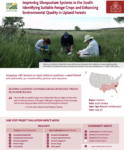
Improving Silvopasture Systems in the South: Identifying Suitable Forage Crops and Enhancing Environmental Quality in Upland Forests – Alabama
Engaging with farmers as equal partners positions a small liberal arts university as a trustworthy partner and resource. We were able to establish longer-term relationships that we might not have been able to otherwise because of the grant. SARE gave us legitimacy in the community, that we were doing equivalent work to the local land […]
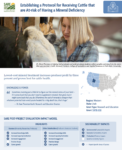
Establishing a Protocol for Receiving Cattle that are At-Risk of Having a Mineral Deficiency – Utah
Lowest-cost mineral treatment increases producer profit by three percent and proves best for cattle health. Sometimes investing just a little bit to figure out the mineral status of your herd—if it comes back that you don’t need to supplement minerals then great, but it might come back that you do. Oftentimes the cost of minerals […]
Farmer/Rancher Grants
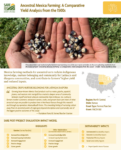
Ancestral Mexica Farming: A Comparative Yield Analysis from the 1500s – Kansas
Mexica farming methods for ancestral corn reclaim indigenous knowledge, nurture belonging and community for Latino/a and diaspora communities, and contribute to farmers’ higher yield and reduced inputs. Growing lesser-known Mexica food products such as maize, pipiche, papalotl, jicama, and mexican mint marigold has created a deeper sense of community between myself and local Latino/a communities […]
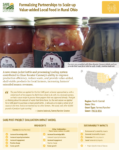
Formalizing Partnerships to Scale-Up Value-added Local Food in Rural Ohio
The year before we applied for the first SARE grant, a farmer approached us with a whole bunch of hot peppers he didn’t know what to do with. As a licensed cannery, we had a sauce recipe to process these peppers that was approved already. That got us thinking about the amount of waste that […]
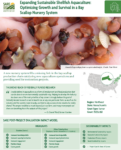
Expanding Sustainable Shellfish Aquaculture: Optimizing Growth and Survival in a Bay Scallop Nursery System – Massachusetts
A new nursery system fills a missing link in the bay scallop production chain catalyzing new aquaculture operations and providing seed for the restoration projects. I really believe in aquaculture as a form of employment and food production that can be done in an environmentally sustainable way. Helping to develop the industry has been one […]
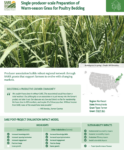
Single-Producer-Scale Preparation of Warm-Season Grass for Poultry Bedding – Pennsylvania
Producer association builds robust regional network through SARE grants that support farmers to evolve with changing markets. We couldn’t have done it without SARE. [The association] would have been a total washout. Our philosophy as an association is to put money into the farmer’s pocket, not take it out. Our dues are very low and […]
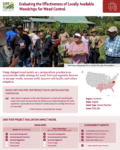
Evaluating the Effectiveness of Locally Available Woodchips for Weed Control – Virginia
Using chipped wood mulch as a permaculture practice is an economically viable strategy for small fruit and vegetable farmers to manage weeds, increase yield, improve soil health, and reduce irrigation. Water doesn’t evaporate as fast when the ground is covered with something like mulch; that’s what the wood chips did. Moisture was steady throughout the […]
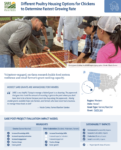
Different Poultry Housing Options for Chickens to Determine Fastest Growing Rate – Hawai'i
Volunteer-engaged, on-farm research builds food system resilience and small farmer's grant-seeking capacity. SARE is very helpful. Trying to manage a federal grant is so daunting. The paperwork that goes into it and the amount of recording, it gets to the point where you don't have time to be a farmer because you're too busy doing […]
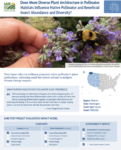
Does More Diverse Plant Architecture in Pollinator Habitats Influence Native Pollinator and Beneficial Insect Abundance and Diversity? – Washington
Time-lapse video surveillance pinpoints native pollinator's plant preferences, informing small but potent action to mitigate climate change impacts. With entomology, I’m interested in all aspects of a whole ecological system. ... It’s been eye-opening that these different plants attract such a variety of insects, and that by combining different plants together we can tailor which […]
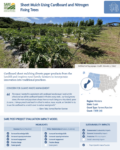
Sheet Mulch Using Cardboard and Nitrogen Fixing Trees – Guam
Cardboard sheet mulching diverts paper products from the landfill and inspires rural family farmers to incorporate innovation into traditional practices. The reason I wanted to experiment with cardboard was because I work at the school and see all the cardboard loaded in the bins every week. ... Our local grocery stores, the mom-and-pop stores always […]
Partnership Grants
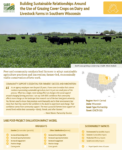
Building Sustainable Relationships Around the Use of Grazing Cover Crops on Dairy and Livestock – Wisconsin
Peer and community catalysts lead farmers to adopt sustainable agriculture practices and innovation; farmer-led, economically viable conservation efforts work. As an agency employee over the past 20 years, I have come to realize that science matters in promoting sustainable agriculture, but it is just one small piece of the process. What has a larger, more […]

Advancing Walnut Syrup Production for Increased Profitability and Farm Income Diversification – West Virginia
Researchers advance black walnut tapping for commercial syrup production, diversifying the industry and furthering niche market opportunities. Walnut syrup is truly a novel product commercially. We knew of people making it on the home scale and, scientifically, that it could be done. There’d been some small- scale research into the process of making it similarly […]
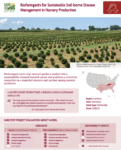
Biofumigants for Sustainable Soil-Borne Disease Management in Nursery Production – Tennessee
Biofumigant cover crop research guides a student into a sustainability-focused research career and positions a university researcher as a respected resource and partner among nursery productions. This study impacted the graduate student’s work path. ... After almost five years, she is still digging into research questions as a postdoctoral researcher. It was very, very helpful […]
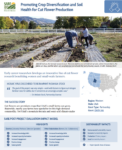
Promoting Crop Diversification and Soil Health for Cut Flower Production – Utah
Early career researcher develops an innovative line of cut flower research benefitting women and small-scale farmers. The goal of this project was very simple—work with farmers to figure out nitrogen fertilizer rates for dahlia, but it turned into an amazingly complex case.” —Dr. Melanie Stock, Partnership Grantee Mosaic Virus Discovered to be Rampant in Dahlia […]
Graduate Student Grants
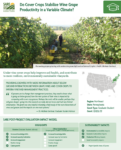
Do Cover Crops Stabilize Wine Grape Productivity in a Variable Climate? – Pennsylvania
Under vine cover crops help improve soil health, and contribute to more resilient, environmentally sustainable vineyards. If growers are to change their management practices, they need to know what is going on below ground, how the root system of their vines is impacted by competing with cover crop grasses. Perhaps the roots will be smaller, […]
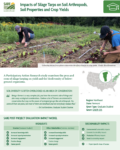
Impacts of Silage Tarps on Soil Arthropods, Soil Properties and Crop Yields – Vermont
A Participatory Action Research study examines the pros and cons of silage tarping on yield and the biodiversity of below-ground organisms Being a farmer is a very complex job; you have the economic side of things and also many ecological considerations. I believe a lot of farmers are interested in conservation but may not be […]
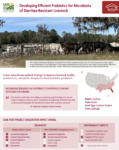
Developing Efficient Probiotics for Microbiota of Diarrhea-Resistant Livestock – Florida
A new microbiome guided strategy to improve livestock health, productivity, and profit margins for beef and dairy producers. Our intention with what we're calling a microbiome guided strategy is to use our research findings to enhance calves’ microbiomes by suggesting to farmers how they can breed and manipulate the animal diet to boost their economic […]
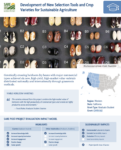
Development of New Selection Tools and Crop Varieties for Sustainable Agriculture — California
Genetically crossing heirloom dry beans with major commercial types achieved six new, high-yield, high-market value varietals distributed nationally and internationally through grassroots methods. The varieties released from this project combine the high-market value of heirlooms with the high productivity of commercial types and several are highly productive across environments.” —Travis Parker, Graduate Student Grantee Viable […]
Professional Development Program Grants
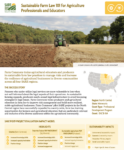
Sustainable Farm Law 101 for Agriculture Professionals and Educators – Minnesota
Farm Commons trains agricultural educators and producers in sustainable farm law practices to manage risks and increase the resilience of agricultural businesses in diverse communities across all four SARE regions. Region: North CentralState: Minnesota Grant Type: Professional Development ProgramGrant: ENC18-164 SARE POST-PROJECT EVALUATION IMPACT MODEL This Evaluation Impact Model is specific to this SARE-funded project. […]
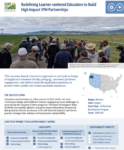
Redefining Learner-Centered Education to Build High Impact IPM Partnerships – Oregon
This outcome-based, interactive approach to curriculum design strengthened extension faculty pedagogy, increased producer engagement, and shifted pesticide application practices to protect water quality and reduce pesticide resistance. Region: WesternState: OregonGrant Type: Professional Development ProgramGrant: EW16-010 SARE POST-PROJECT EVALUATION IMPACT MODEL This evaluation impact model is specific to this SARE-funded project. The Success Story Extension professionals […]
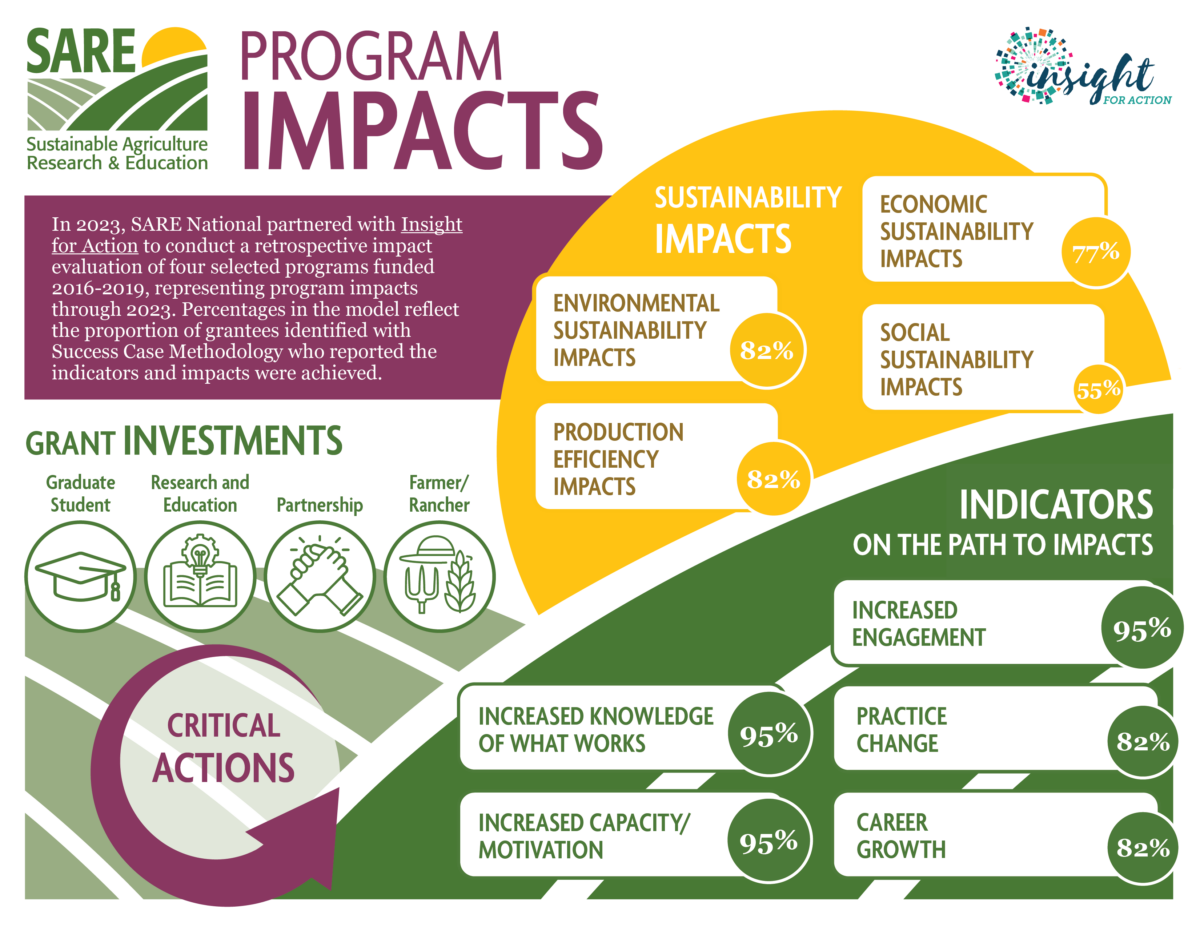
Percentages in the final Program Impacts Model reflect the proportion of all of the case study grantees who reported that they achieved various indicators and impacts by participating in a SARE funded project.The evaluation demonstrated that when SARE’s grant investments are successfully implemented, they contribute to Environmental, Production, Economic and Social sustainability impacts. Grantees achieve these impacts through various combinations of Increased Knowledge of What Works, Increased Capacity/Motivation, Increased Engagement, Practice Change, and Career Growth.
For a thorough description of project activities and methods visit the Project Final Report.
Grant Projects by Location
Click an icon to access the project reports associated with each grant that was included in this impact assessment. PDP grants are not included on the map.
Note: The case study for the North Central SARE Graduate Student project Development of Breeding Lines and Molecular Tools for Selection of Grapevines with Altered Canopy Dynamics via Dissected Foliar Morphology is not available at this time.
